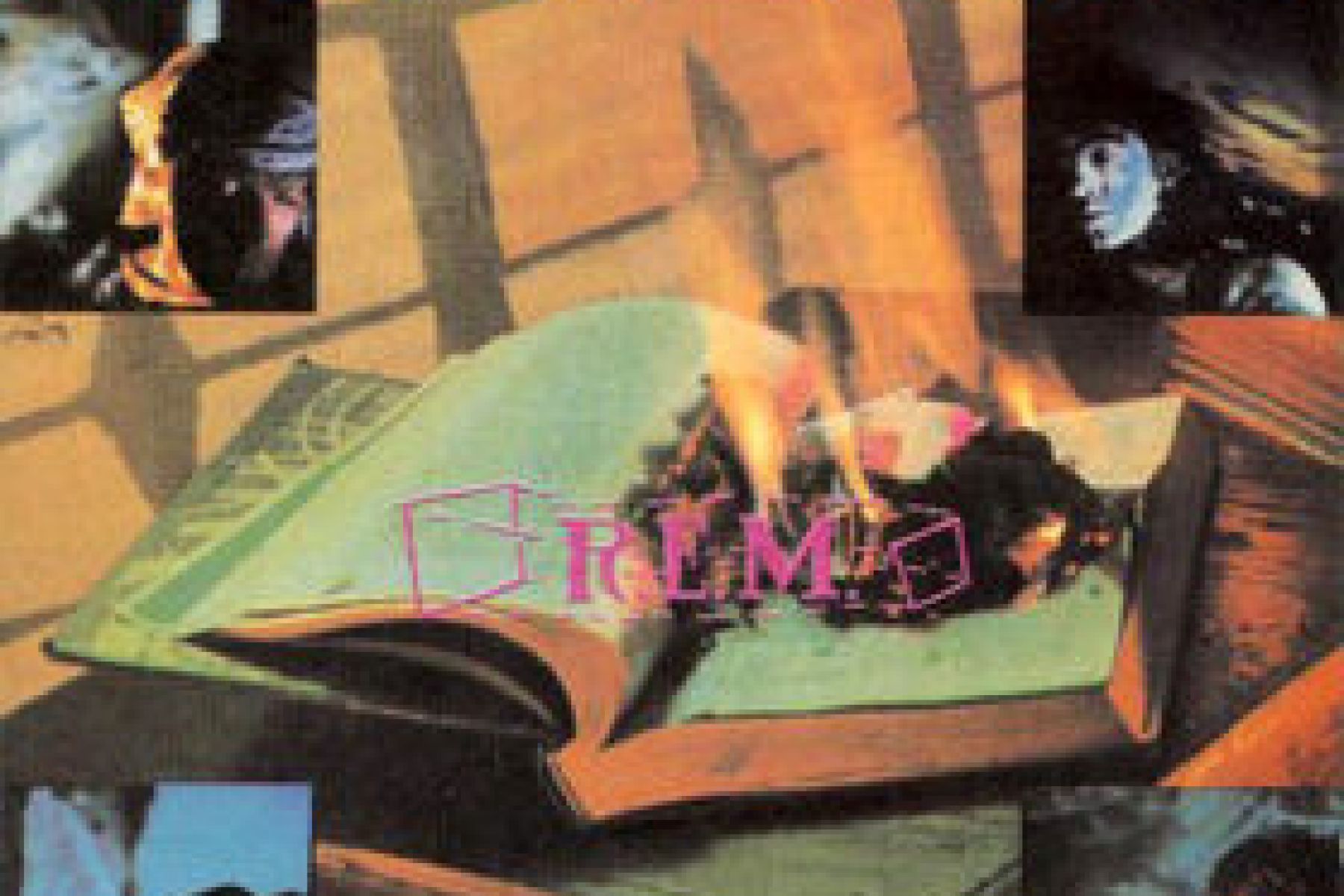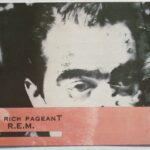Throughout their 30-year recording career, R.E.M. took plenty of sonic detours and meandered down less-travelled back roads. However, 1985’s Fables of the Reconstruction was the band’s first major curveball. The LP is sonically and thematically quite different from the music that preceded (and then succeeded) it; in fact, the album isn’t necessarily immediately accessible, aside from the brooding jangle-pop of ‘Driver 8’ and goofy ‘Can’t Get There from Here.’
More than that, Fables of the Reconstruction has a musty, almost antique atmosphere that feels at odds with not only the mid-1980s, but R.E.M.’s entire catalogue. And it also has a different emotional timbre: After the warm tones and introspective worldview of R.E.M.’s first two albums, 1983’s Murmur and the following year’s Reckoning, Fables of the Reconstruction looked outward. The songs are reactions to being in unfamiliar surroundings, of people trying to find their bearings in a strange place.
On a song such as ‘Maps and Legends’, this idea is somewhat literal (“Maybe these maps and legends/Have been misunderstood”, Stipe sings), while on the restless ‘Driver 8’ the idea of the unknown spurs loneliness and longing: “We can reach our destination, but we’re still a ways away.” The fragmented disco-funk of ‘Can’t Get There from Here’, meanwhile, coyly plays with the idea of conflicting directions. On the verse, Mills sings, “I’ve been there, I know the way”, as Stipe growls above him, “Can’t get there from here.”
About as straightforward as things get is on the plaintive ‘Good Advices’, when Stipe wails, “Home is a long way away.” The vulnerable, yearning tone is a stark counterpoint to the sentiments of the Reckoning closer ‘Little America’: The road-driven drudgery of “another Greenville, another Magic Mart” feels almost buoyant and novel, while the line “Jefferson, I think we’re lost” is sung almost with a shrug. On Reckoning, being unsure of where you are is an adventure, not an emotional liability like it is on Fables of the Reconstruction.
No doubt these themes reflected where R.E.M. was at the time. The band travelled to England to record the album with producer Joe Boyd, who was known for his collaborations with Pink Floyd and Nick Drake. In 2015, bassist Mike Mills recalled that he enjoyed working with Boyd, though “cold, alien London” in the mid-’80s “was a pretty strange place to be.” Recording Fables was also a challenge, he added: “That process was kind of difficult. It resulted in a great record and one that has as much its own sound as any record we ever did.” (He wasn’t alone in his discomfort: In 1991, vocalist Michael Stipe told Spin the “worst year of his life was when he was 25,” which coincides with Fables of the Reconstruction‘s creation and release.)
Yet the fragmentation of spatial and temporal relations on Fables of the Reconstruction is also a reflection of the disorientation in the album’s music. Production-wise, things lack the autumnal crispness of previous R.E.M. work; instead, the album feels as if the music is filtered through a foggy lens. (That’s not an indictment of Boyd’s style; it’s just another by-product of the album’s off-kilter stance.) Although there were hints of this muddier tone on previous records (most notably the stark ‘Camera’, from Reckoning), Fables of the Reconstruction is shrouded in murk.
Musically, things feel both sepia-toned (the casual banjo loping through ‘Wendell Gee’, the simmering drums and churning rhythms of ‘Auctioneer (Another Engine)’ and verdant (the curlicue riffs driving ‘Life and How to Live It’, the shy jangle of ‘Green Grow the Rushes’). On opening song ‘Feeling Gravity’s Pull’, things feel intensely mysterious: Peter Buck’s sparse, cascading guitar flutters like a flickering candle, and the song ends with a chorus of cello and violins.
That old-fashioned vibe extends to the character sketches on Fables of the Reconstruction, which feel like characters out of a faded children’s book. There’s ‘Old Man Kensey’ and his sweetly misguided ambition, the ill-fated antics of ‘Wendell Gee’, and the ephemeral girl in ‘Kohoutek’ who disappears like the titular comet: “You were gone, like Kohoutek, can’t forget that.” The album deals with loss, regret, disappointment and grief by examining other people’s lives, navigating how the sense of self—and how people relate to others—shifts when placed in an unfamiliar environment and facing uncomfortable truths.
Fables of the Reconstruction is a bit stand-offish, a little hesitant to let listeners in—at least at first. Yet there’s something appealing about the album’s vibe and atmosphere: It’s as mysterious as Murmur, yet feels enriched by even more layers of history and emotional burdens. Fables of the Reconstruction exists in its own tidy little universe that’s never been duplicated or recreated anywhere else. Perhaps all of this explains why the album isn’t necessarily the first choice for anniversary posts or gushing; it still feels like a hidden gem, something still waiting to be discovered.
Yet in hindsight, Fables of the Reconstruction was an inflection point in the band’s career, much like how Monster became one nearly a decade later. After Fables of the Reconstruction‘s release, the band started to shed its mystical Southern poet reputation and found the confidence to become more stridently political, and to leverage louder, clarion rock & roll vocals to speak up about political and societal issues. In hindsight, Fables of the Reconstruction functioned as a bridge between the band’s youthful mysticism and mid-career activist stance. Paradoxically, R.E.M. had to be comfortable feeling lost in order to find a new, surefooted way forward.
(A version of this article first appeared in Salon, a website located at http://www.salon.com.)




